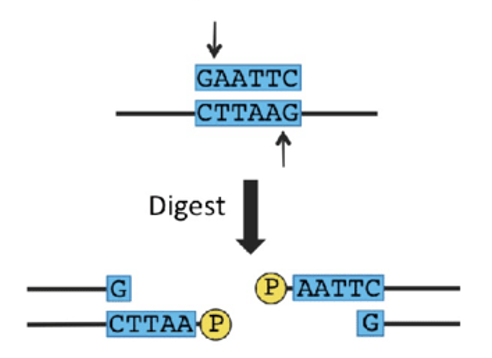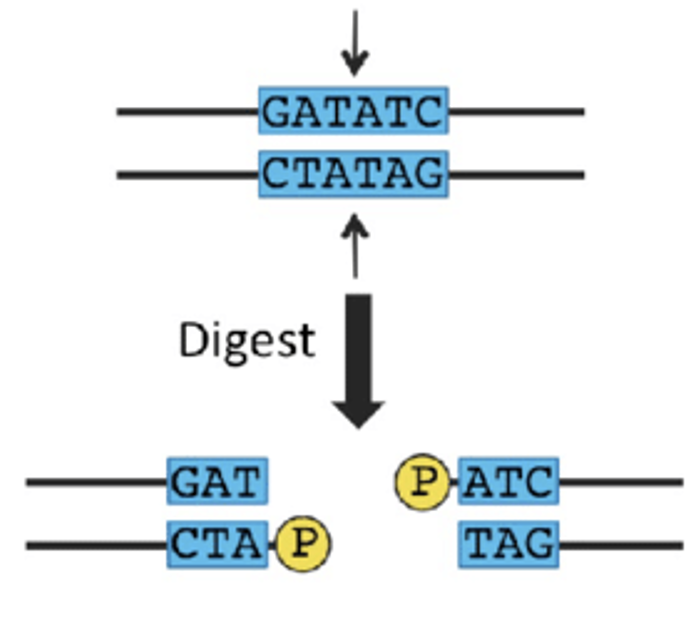Methods Course - DNA Cloning
1/15
There's no tags or description
Looks like no tags are added yet.
Name | Mastery | Learn | Test | Matching | Spaced |
|---|
No study sessions yet.
16 Terms
What is the goal/target for DNA cloning?
to insert a specific piece of DNA (a gene or other DNA sequence) into a plasmid (small circular piece of DNA found in bacteria) to study or use it in various experiments.
What is the purpose of genomic/sequencing constructs?
add new DNA to understand genes
these constructs are used to add new DNA sequences to the plasmas, this can help in sequencing and understanding the genome or specific genes.
What is the purpose of expression constructs?
make proteins from inserted DNA
designed to help cell make specific protein, DNA sequence inserted into plasmid is transcribed into mRNA and then translated into a protein.
What is the purpose of reporter constructs?
use reporter genes to see gene activity
contain a “reporter gene” (like GFP which makes cells glow green) to study where and when a gene is active. they help scientists see how genes are expressed in different tissues or conditions.
Simplified Example of DNA cloning:
choose a vector (plasmid) - a circular piece of DNA that can replicate in bacteria
insert DNA of interest (insert) - add the gene you want to study into the plasmid
transform bacteria - introduce the plasmid into bacteria so they can replicate it
analyze - study how the inserted DNA behaves (protein production/gene expression/)
How to generate a useful DNA fragment - “Insert”
restriction digest: method to cut DNA at specific sequences using enzymes called restriction enzymes
types of cuts:
sticky ends: cuts made by enzymes like EcoRI that leave overhanging ends (go well with complementary sequences)
blunt ends: cuts made by enzymes like EcoRV that leave no overhangs
partial/complete/double digest
partial - only some of the restriction sites are cut
complete - all extraction sites are cut
double digest - uses two different restriction enzymes to cut at two different sequences
cloning process:
donor plasmid - contains the DNA fragment (insert) you want to clone
restriction digest - use enzyme to cut the donor plasmid and the recipient plasmid
insert DNA - DNA fragment (insert) from the donor plasmid is inserted into the recipient plasmid
ligation - the DNA fragment is joined into the recipient plasmid using an enzyme called DNA ligase
PCR:
technique used to amplify specific DNA sequences
adding adaptors/handles - small sequences of DNA (adaptors) are added to the ends of the DNA fragment to make it easier to clone
Shearing:
method to randomly break DNA into smaller pieces to create genomic libraries to avoid biases that come frm
restriction digests
stick vs blunt ends
PCR
shearing
Example:
cut the DNA
insert the DNA
seal the DNA
amplify the DNA

Type of restriction digest:
Sticky ends w/EcoRI

Type of restriction digest:
blunt ends: EcoRV
What are the minimal parts required for plasmid?
origin of replication (ori) - ensures plasmid replication
selectable marker - IDs cells with the plasmid (antibiotics/ampicillin or nutritional/URA)
multiple cloning site (MCS) - provides sites for DNA insertion
Cloning Plasmid
purpose: clone or amplify a specific DNA fragment
key features: MCS, selectable marker, ORI
MCS - essential with several restriction sites for easy insertion of DNA fragments
When to use:
amplifying or cloning specific DNA fragments
preparing DNA for sequencing or other analyses
Example: cloning a gene to study its sequence or to use it in further experiments
Expression Plasmid
Purpose - produce a specific protein in a host cell
key features:
strong promoter - to drive high level of gene expression
RBS - ensure efficient translation of mRNA into protein
selectable marker - ID cells that have taken up plasmid
MCS - included for inserting the gene of interest
transcriptional terminator - ensures proper termination of transcription
tags/fusions (optional) - (His-tag for easy purification or detection)
When to use:
protein production for study, industrial applications or therapeutic purposes
functional studies to understand protein roles
protein purification
Example: producing insulin in bacteria for diabetes treatment
Reporter Plasmid
Purpose: study promoter activity and gene regulation
key features:
promoter region - main feature, can be weak or strong depending on study
reporter gene (GFP) - often included
selectable marker - ID cells that have taken up plasmid
MCS - included for inserting different promoter or regulatory sequences
when to use:
analyzing promoter strength and activity
investigating gene regulation
studying tissue-specific expression or response to eviormental changes
Example: studying how a certain promoter responds to different temperatures using a reporter gene like GFP.
Transformation
introducing DNA into bacterial cells using chemicals or electric shock
transfection
introducing DNA into vertebrate cells using calcium phosphate, lipsomomes, or electric shock
selection
killing off or separating cells to find ones with the new DNA
screening
using visible changes or sequential testing to ID cells with new DNA